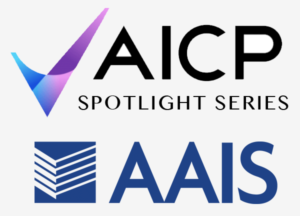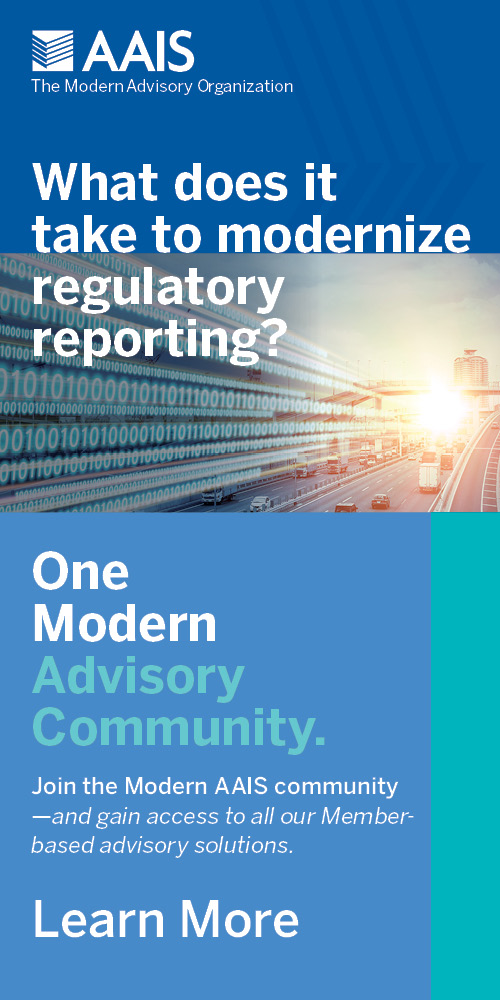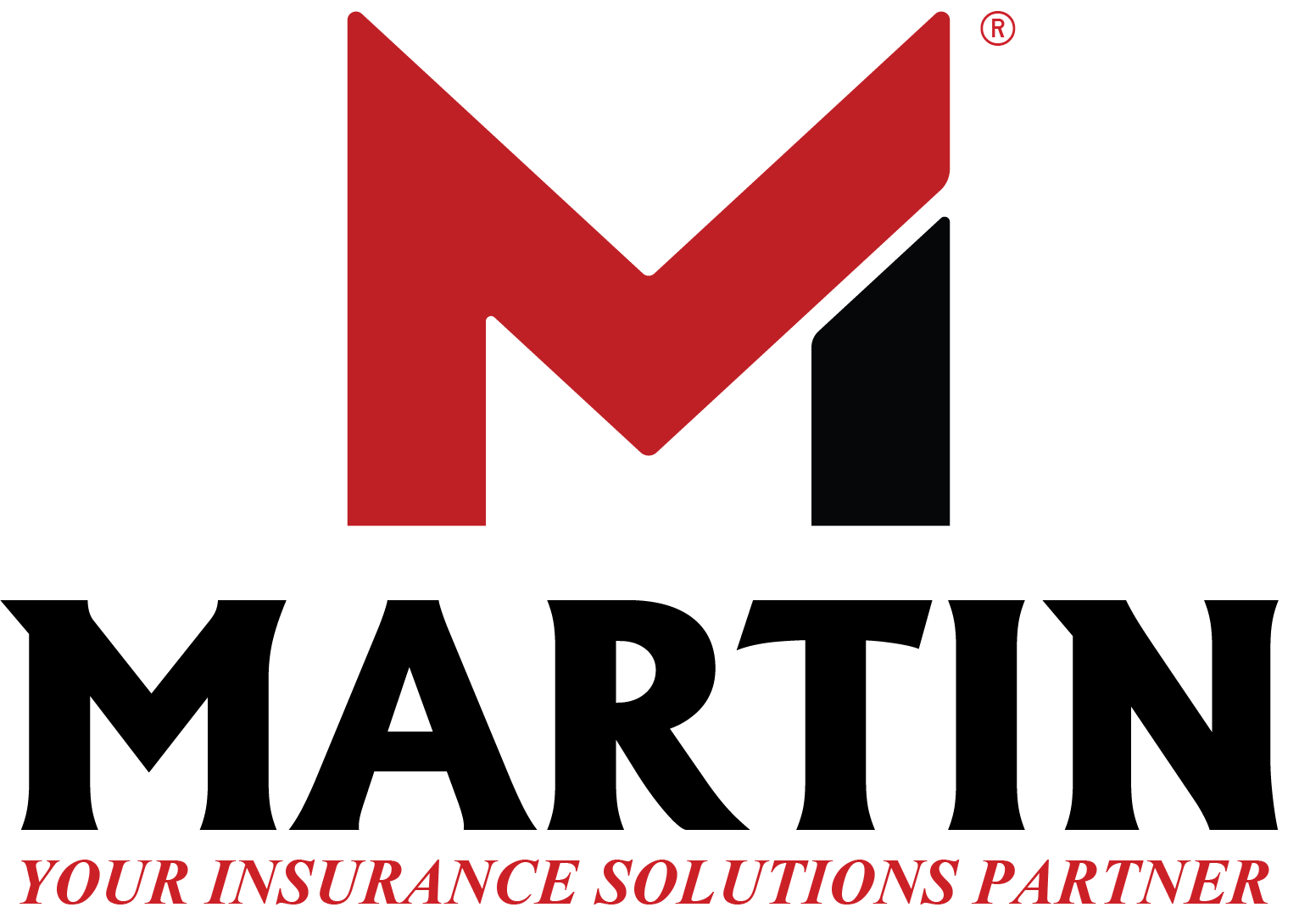
I had the pleasure to (virtually) sit down with Robin Westcott, Vice President, General Counsel of Government Affairs, Legal & Compliance of the American Association of Insurance Services (AAIS) to learn more about the organization, its ties to the AICP as well as her perspective on the future of the Insurance Industry.
Tell me a little about yourself and your background.
I have been at AAIS for seven and a half years. I oversee all things compliance/government affairs and support most of the legal operational infrastructure at AAIS. I was a regulator— I spent almost 23 years with the Florida Department of Insurance. I worked my way through the Department primarily in P&C. Many of the issues I addressed really were reliant upon good quality data and understanding the marketplace. The open source concept, the transparency, the needs for regulator to have the information to do their jobs and the same information that having values to the companies— that has been very important throughout my career and really magnified in what I’m doing now.
Can you give some background on AAIS?
AAIS is a national advisory organization, traditionally supporting loss cost, forms, and manuals for the Property & Casualty arena, but over the last few years has moved into modernizing what an advisory organization is. We looked at the intent around forming advisory organizations; the primary intent was to be able to have a conduit between companies and regulator, especially around data. Now the advisory organization is expanding on that and trying to create transparency around the data as it is reported, used, and leveraged in the P&C marketplace.
Is that data then used when creating SERFF filings?
Yes, that is a further expansion. Right now, we still do the traditional model around base forms, endorsements, etc., what we are exploring as a modern advisory organization are things like AI, and different technologies that may support us to move to content in a much different way, and what we call the “deconstruction of policy language,” to really get to clause and coverage and then decorating those clauses and coverages with information. Maybe it’s around what statute facilitated a certain change in a policy wording or what mandate there is or case law that changed it. It is really looking at how we can help the industries move to new models and new types of technology platforms so that we can all give our policyholders more information.
Do a lot of your members coincide with the AICP members?
Yes! We have a number. We represent more than 700 carriers. Lately we really shifted the way we look at and recruit for membership. Previously, we had a standard model, recruiting by state, by line of business and by participation. Now we are really recruiting membership to be around open access, open content, and open source. If you are a member of AAIS, you don’t get charged by which lines of business in which state, in that traditional model. But many of the members of AICP use our products. The way that we really align with the AICP is in that membership model, the members are a community. And that is why we see AICP as such a great partner for AAIS, we want to redefine advisory services in that same way. We are part of an ecosystem, a community around how providers work in our industry. So, I think we complement each other very well in moving to that membership structure where we are not charging you by the content, we are trying to create community, much the same as AICP.
How is the Organization adjusting to the Pandemic and the new work-from-home structure?
Fortunately, AAIS is a remote workforce. The staff is all over the Country. Our plan around the Pandemic response was very easy. We were already set up to do it. It is more than just moving people to be able to work remotely in a physical perspective; it is about work oversight— a management tool, that allows you to manage the work from a remote location and have that continuity and collaboration of the workflow. It wasn’t just the physical location for us, we work in an environment called “Agile.” Agile is a workflow process where you work in 2-week sprints. There is an accountability in the work you are doing. I don’t generally assign work. I have discussions with my staff about the direction we want to take and initiatives we are working on at AAIS. We have meetings about what we are doing next. It gives you the ability to pivot and adjust to the environment you’re in or some need you didn’t see coming, but still manage that work, still allow you to go towards goals you set for the organization around big strategic ideas but keep up the workflow process in such a way that is manageable. It is not just about transitioning the physical, it is about transitioning the work.
At the recent AICP Winter Conference, the word “InsurTech” was floating around a lot- is that something that the AAIS uses and values?
We do. We are a different spin on the InsurTech model. Most InsurTechs are usually technology platforms trying to penetrate the insurance marketplace. We are working from the inside. We are an insurance organization, using technology to promote some of the ideas and efficiencies we see that it can bring. We do many of the same functions as an Insurance Company in development of the loss cost and products, and it has been great finding operational efficiencies on how to do that. But the next step is how do we offer that to our members? How do we take the technology platforms that we have and help our members start using them? Many companies cannot afford these systems, but we can help them get to something that is very workable by basing most of our development on open-source technology. It is the community coming together building baseline technology that serve the whole industry.
In essence your members are competitors, how does that play out for the AAIS?
That is a big question for Insurance companies when confronted with our model. They don’t want to “give away their secret sauce.” My response to them is there are a lot of examples throughout the United States where competitors have come together to form certain industry-wide standards. For instance, right now you have many of the auto makers coming together around data and performance standards. The internet would not be here without competitors coming together and saying, “wait there are HTTP protocols and they have to be standard amongst everyone.” They had to come together to form the baseline technology which we now know as the internet. It is not unheard of for competitors to come together and talk about the necessary components and to build the foundational technology and data standards once.
What is the relationship between the AAIS and the Regulators?
It has changed significantly over the past few years. Now we are starting to have regulators look at us not just as another filer, but more around the partnership idea. We have found them to be very interested in working with us. Some of our work around technology platforms and changing the transparency level has really emphasized that we are here as a conduit to help this industry be successful.
You have mentioned that the AAIS works on foundational products, do you lobby for new legislation or do you use regulation that is passed in order to create these products?
No, we don’t generally have any activity around lobbying or legislative action. However, we may, as a subject matter expert, offer suggestions. Some things we do are 100 years old, are still very valuable and we need to keep doing them. However, some things we do in the insurance industry really are ripe for change. We want to help position our members, regulators, and our other stakeholders to be prepared for that change. An example of this is our new fire protection classification model: Fire Loss and Mitigation Evaluation Score, “FLAMES,” bringing a new perspective on fire protection to the industry.
What message would you like to communicate to the Insurance Compliance Industry?
People often think that their wold is not going to change. However, if you’ve lived through 2020, you know that is not a true statement. We have to build resilient institutions that can help the Companies adapt to change, and a modern advisory organization does just that. We are here to help our stakeholders, our members, and regulators by acting as a conduit for this type of activity so that the community can grow and build around the solutions that will be necessary for all this change.
For more information on the AAIS, please visit: aaisonline.com
Author: Ilana Kauffman is the owner of Regulatory Compliance Consulting, LLC and proud member/volunteer for the AICP Brand & Marketing Committee.











